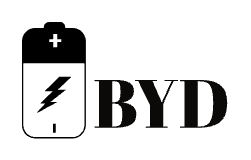Global Lithium Battery Shipping Experts
Shipping Battery Goods from China
Specializing in the secure transportation of lithium batteries from China to destinations across the globe. Our certified team ensures full compliance with IMDG, IATA, and ADR regulations, providing end-to-end logistics solutions for dangerous goods.
✓ Certified Hazardous Cargo Handling
✓ Door-to-Door Global Shipping
✓ 24/7 Customs & Compliance Support
Ship with Confidence. Reach Every Market.
How Can We Safeguard Your Battery Shipments?
Ensure 100% IATA/IMDG/ADR-Compliant global transportation for lithium batteries. From air freight to ocean logistics, we specialize in secure, fast, and fully certified dangerous goods shipping from China to worldwide markets.
√UN3480/UN3481 Certified Handling
√24/7 Hazardous Cargo Tracking
√ Door-to-Door Customs Clearance
Battery by Air
Direct DG space booking with major carriers (PO/3V/RU/7L/CA/CZ). IATA-compliant lithium battery air freight. Priority handling & live tracking.
Battery by Express
DHL/UPS DG-certified lithium battery shipping. Full UN3480 packaging compliance + dedicated routes. Agency rates save 15-30% vs standard.
Battery by LCL
Small batches (1-8 pallets) consolidated in DG-only containers. Fireproof segregation & full IMDG compliance. Weekly China departures.
Battery by FCL
DG & non-DG containers via CMA/MSK/OOCL. Priority booking with IMDG fireproofing.
Battery Door-to-Door
DAP/DDU/DDP options + tax-paid clearance. Dedicated DG routes from China with real-time tracking.
Battery Storage Solutions
DG-certified warehouse with fireproof cells. 30-day free storage + CE/UL compliant handling.
20 Years Powering Global Battery Logistics
Trusted by 500+ manufacturers, we move 12,000+ DG shipments annually from China to 150+ countries. Certified in IATA/IMDG/ADR with 99.7% on-time delivery.




Our Customers
We proudly serve the world’s leading lithium battery manufacturers, including industry pioneers like BYD, Tianjin Lishen, BAK Power, and Sunwoda. Our expertise powers their global supply chains with compliant, secure logistics solutions.









"10 Years of Reliable Partnership - Expert Lithium Battery Transport, Unmatched Service!"

Meet Our Leadership
They have 10 years of previous experience in lithium battery transportation operations. It’s your best partner.

Bill Guo
Marketing Director

Iven shen
Sales Manager

Josh Huang
Sales Representative
Do you need to transport lithium batteries in China?
A more than 20 years of experience in lithium battery transportation, a professional team of dangerous goods transportation, the scale of cooperation with thousands of customers, and hundreds of thousands of tickets of lithium battery cargo operation experience. Don’t hesitate to contact us!
